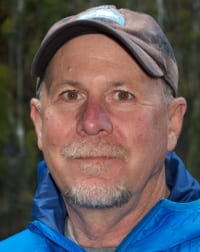CalTrout Op-Ed: It is Time for Congress to Act on the Klamath Agreements
Note: The following Op-Ed by Jeff Thompson — California Trout’s Executive Director — appeared in the Sacramento Bee.
A decade after a dramatic fish kill and water shut offs brought tensions to a head on the Klamath River, a broad group of stakeholders has recommitted to the carefully negotiated basin-wide agreements that set the course for the future of the river. These agreements are supported by an unlikely and diverse group, including farmers, fishermen, conservation groups, tribes, and government agencies. The agreements call for dam removal as well as the restoration of the Klamath fisheries and communities.
42 groups signed the Klamath Basin Restoration Agreement in 2010, setting forth milestones to complete the agreement, including Congressional approval of funding. After the 112th Congress failed to act, last month all of the parties to the agreement extended the pact to 2014. We now call on the 113th Congress to act quickly to fund the removal of the dams in order to begin the long process toward true restoration of the river.
Solutions in this Agreement and the Klamath Hydroelectric Settlement Agreement (collectively, the Klamath Agreements) represent the only comprehensive plan to restore fisheries, fairly allocate limited water, redevelop resource-based economic opportunities, and minimize power cost hikes for ratepayers.
Despite these impressive accomplishments, the Klamath Agreements are not without their critics. Some would prefer to see the dams left in place, while others want to speed their removal. Ironically, both sides of the critic fence believe that a return to the traditional federal dam licensing process, using fish ladders or trucks to bring salmon upstream, or abolishing the Endangered Species Act, would be faster and cheaper alternatives.
These groups are disregarding reality. Years of decisions by federal regulators, courts, public utility commissions, and independent economists show that the negotiated solution provides our best way forward. The Federal Energy Regulatory Commission has never ordered a dam to be removed against the wishes of its owner. The utility commissions in Oregon and California have already ruled that pursuing the Agreements is in the best financial interest of ratepayers in the region.
Countless legal experts tell us a return to litigation would push decisions to Washington and delay resolution on the future of the Klamath River to nearly 2030. The future of this region should rise from the foundation of the collaboratively developed Klamath Agreements, not the courts or a faceless Washington bureaucracy.
The Klamath Agreements offer significant broad economic benefits. First, a traditional FERC process leaves ratepayers unprotected from dramatic electricity cost increases. The Agreements protect ratepayers from drastic rate hikes. Perhaps more importantly, an analysis under the National Environmental Policy Act indicated the implementation of the Agreements would generate 4,600 jobs regionally and protect the $750 million farming and fishing industries that are still at risk.
Remember, this extension was necessitated not by flaws in the accords or diminished unity amongst signatories, but by Congress’ lack of action to authorize and begin to fund implementation.
Conditions have been right for the trust to continue among the stakeholders. Timely water releases from the Trinity River and PacifiCorp dams, cooler weather at the right time, and sustained trust amongst formerly warring neighbors helped protect a record fall Chinook salmon run and empowered innovative water supply planning for family farmers.
We know that our Congressional delegation understands that these conditions, which reduce tensions around water supply, are not present every year. They also know that it is only Congress standing between a viable solution to the basin’s water woes and a return to crisis with the next severe drought.
As the 113th Congress kicks off with Senator Wyden (D-OR), Senator Feinstein (D-CA), and Congressman Walden (R-OR) in leadership positions, there has never been a better time for our representatives to establish their legacy in the Klamath. We ask them to help us create a permanent solution to a problem that has festered for over a century.

California Trout ED Jeff Thompson
Jeff Thompson is Executive Director of California Trout, a non-profit fish and watershed science and advocacy organization. CalTrout was an active participant in the negotiations that led to the historic Klamath Basin Restoration and Hydroelectric Settlement Agreements.




